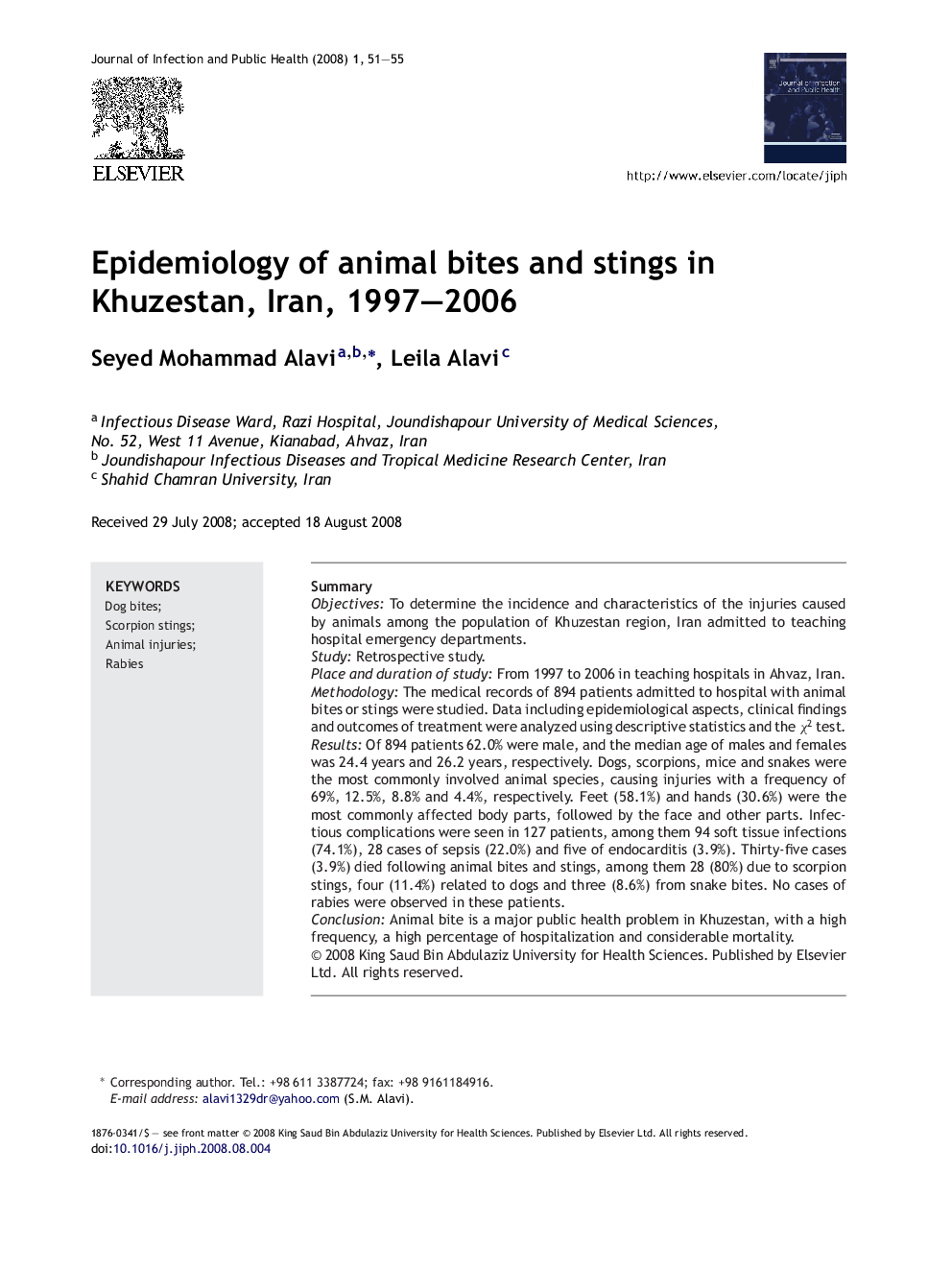| Article ID | Journal | Published Year | Pages | File Type |
|---|---|---|---|---|
| 3406304 | Journal of Infection and Public Health | 2008 | 5 Pages |
SummaryObjectivesTo determine the incidence and characteristics of the injuries caused by animals among the population of Khuzestan region, Iran admitted to teaching hospital emergency departments.StudyRetrospective study.Place and duration of studyFrom 1997 to 2006 in teaching hospitals in Ahvaz, Iran.MethodologyThe medical records of 894 patients admitted to hospital with animal bites or stings were studied. Data including epidemiological aspects, clinical findings and outcomes of treatment were analyzed using descriptive statistics and the χ2 test.ResultsOf 894 patients 62.0% were male, and the median age of males and females was 24.4 years and 26.2 years, respectively. Dogs, scorpions, mice and snakes were the most commonly involved animal species, causing injuries with a frequency of 69%, 12.5%, 8.8% and 4.4%, respectively. Feet (58.1%) and hands (30.6%) were the most commonly affected body parts, followed by the face and other parts. Infectious complications were seen in 127 patients, among them 94 soft tissue infections (74.1%), 28 cases of sepsis (22.0%) and five of endocarditis (3.9%). Thirty-five cases (3.9%) died following animal bites and stings, among them 28 (80%) due to scorpion stings, four (11.4%) related to dogs and three (8.6%) from snake bites. No cases of rabies were observed in these patients.ConclusionAnimal bite is a major public health problem in Khuzestan, with a high frequency, a high percentage of hospitalization and considerable mortality.
